The Coon Rapids Liberty Bell
An advertisement designed to look like an editorial runs in the Minneapolis Star throughout 1970. The headline reads: How Morningside Memorial Gardens helped us answer our children’s questions. Pictured is a well-dressed nuclear family: mom, dad, the boy, the girl, and grandma — who looks healthy but will probably die soon.
The ad is perfectly positioned to reconcile the American fear of death with the midwestern need to not be a burden to your children. A new kind of final resting place for a new kind of Minnesotan, Morningside sets itself apart from stodgy old graveyards in three ways. First, it’s non-denominational, so you don’t have to spend eternity next to the same people you sat next to in church. Second, there are no ostentatious headstones competing to show how loved and wealthy you were. Third, you can pre-purchase your own family plot — described in their brochure as a “lawn crypt” — so not only do your kids not pay to bury you, they can join you when they eventually croak.
The advertorial’s third paragraph swings for the fences:
More and more, today’s families are discovering that by owning cemetery property now, before it is needed, they add a necessary measure of security to their future. They will spare their families the needless worry and financial distress that results when no one plans in advance.
Readers are invited to drive through Morningside’s “park-like area,” and view plans for future development. A salesman will be on-site to answer any questions.
Over the next decade, lawn crypts sell like so many meat raffle tickets. Owners Leonard and Virginia Beckman close between four and five-thousand deals, charging customers an average of $1,500 over five years. That’s 7.5 million 1979 dollars (26.6 million 2020 dollars).
On vacation to Philadelphia in 1975, the Beckmans visit the Liberty Bell and are struck by its effect on children. The couple is saddened at the thought of some local kids not being able to see a Liberty Bell, apparently unaware of the Minnesota Liberty Bell, 20 miles south of Morningside. Leonard declares, “I’m going to have a replica made and send it around the country.” Virginia gazes lovingly at her husband, “Len, that’s the greatest.”
Twelve-thousand dollars later, the Beckmans have their Liberty Bell, cast by the famed Paccard Bell Foundry in France, which produced the 1950 U.S. Treasury replicas.
Now they need the right person to bring the bell to the people. The consummate pitchman, Leonard Beckman knows just the kind of man he’s looking for. He reaches out to veterans groups in search of someone whose “patriotic blood pressure is over 100, who still has some mileage left in him.” Perhaps a retired schoolteacher. He’ll provide an El Camino to haul the bell and a stipend of $20 per appearance.
Over a lively dinner at the Normandy Steakhouse, the Beckmans interview a potential candidate, the Reverend Joseph B. Head, joined by his wife Leona May. Unable to play it cool, Head clearly wants the gig. The four discuss a plan to bring the Liberty Bell to schools across the country. Excited, Head asks if Beckman would like him to visit a school every week. “No. Every day. Sometimes two a day.” the cemetery manager replies.
The rolling Liberty Bell show makes its debut at the Epiphany Catholic School in Coon Rapids on the 8th of April, 1975. Head performs acrobatics, recounts American history, and lets kids ring the bell. The show is a resounding hit.
After underwriting Head’s tour throughout the 1975/76 school year, the Beckmans dedicate the bell at Morningside, just in time to capitalize on Bicentennial fever.
Undaunted, Head secures another bell and keeps the tour going. Over a decade, the Liberty Bell Minister takes four different replicas to more than 900 schools in 36 states — visiting over a million children.
On a sunny Sunday afternoon In 1978, Chester and Harriet Tronstad of Bloomington do what all old Minnesotans love to do — they take a drive to the cemetery to gaze wistfully at their final resting place. At Morningside, they discover someone else has been buried in their lawn crypt. A manager tells them there’s been a mix-up and requests they trade in their deed for another. The couple declines and they soon learn they’re not the only folks to discover something amiss at Morningside.
A Coon Rapids City Council meeting grows heated when 25 disgruntled plot owners air their graveyard grievances. Local residents Walter and Irene Brandenburg had been sold a lawn crypt in Morningside’s proposed Garden of Serenity. Nearly four years later, they’ve paid for two-thirds of their $2,100 plot, but the Garden of Serenity is still just a patch of dirt. Collectively, the plot owners have lost confidence in their ability to die without having anything to worry about. From the dais, Mrs. Brandenburg shares her family’s frustration. “Like my son said, ‘Ma, it doesn’t look like you can even be buried in peace.’ ”
Another couple paid extra for a plot next to a fountain, but the fountain was never built. Some stop making monthly payments and demand refunds. Others threaten lawsuits.
A year-long investigation reveals Morningside sold hundreds of plots that had never been surveyed and registered with the city, a violation of state law. Minnesota law also stipulates 20% of revenue from so-called “pre-need” sales be placed in a separate fund designated for the property’s perpetual care. Morningside’s fund was $33,000 short.
The Beckmans explore bringing in partners to help right the ship. Negotiations with one prospect go south. He sues for damages. Local businessman Richard Einck buys in as a 50% owner. As problems persist, he blames Leonard Beckman’s previous mismanagement — citing his series of 1977 heart attacks.
New manager Otto Christenson locks Virginia Beckman out of the property. She sues, claiming Christenson misappropriated cemetery funds — paying personal parking tickets, spending $13,000 on two new cars, and doling out cash to relatives for “casual labor.”
As time passes, so do Morningside’s customers. Modest bronze plaques spread across the rolling lawn like dandelions. Evergreen trees grow tall and shady. Azalia bushes lend their sweet smells to the serene park-like setting.
Across the country, local family-owned cemeteries and funeral homes are gradually bought up by a handful of international, publicly-traded “death care” companies. Morningside is acquired by Service Corporation International, retaining its name under SCI’s Dignity Memorial brand.
The weather is perfect as we drive through the cemetery on this late August afternoon, if you didn’t know any better, you’d find this state hospitable. Morningside Memorial Gardens bears no visible scars from its tumultuous first few decades — though you won’t find the Brandenburg or Tronstad families among the bronze markers. Both men died in the 1990s and were laid to rest in other area cemeteries. Their wives rejoined them in the 2000s. Hopefully, the only thing their grown children had to worry about was spending the rest of their living years without their parents.
If there is a lesson to be learned at Morningside, perhaps it’s that no matter how much you plan for your own death, life is still full of surprises — liberty is a luxury of the living. Maybe it’s best to accept our absolute powerlessness over death and let the chips fall where they fall. Live while we’re alive. As we leave Morningside, we’re headed to the home of someone who did just that.
Prince Rogers Nelson, the artist known as Prince, formerly known as the Artist Formerly Known as Prince, and known to fellow Jehovah’s Witnesses simply as brother Nelson, died with no spouse, no living children and no last will.
Prince is often described as transcendent — simultaneously of and above sexuality, spirituality, race and genre. In death, he proved to be of and above life itself. If death comes in two acts, the first when your body dies, the second when the last to remember you forgets you — Prince’s immortality is assured.

On the 21st of April, 2016, the lifeless body of Prince was discovered in the elevator of his Paisley Park complex in Chanhassen, 38 miles from Morningside. Chronic hip pain made climbing the single flight of stairs from his studio to his residence difficult. While his use of a cane at the 2013 Grammy Awards immediately made canes cool again, for Prince, it was as practical as it was pimpin’.
He refused to have double hip replacement surgery for nearly a decade. One factor in the decision was likely his religion’s objection to blood transfusions. Instead, Prince treated his pain with a combination of prescribed and otherwise-acquired medication.
The week before his death, Prince passed out on his private jet while returning from Atlanta. The flight made an emergency landing in Illinois, where paramedics administered two injections of Naloxone, a medication that reverses opioid overdose.
Prince’s cause of death was ruled an accidental overdose. The autopsy revealed an exceedingly high concentration of fentanyl, a highly addictive synthetic opioid 50 times more potent than heroin. Pain pills found at Paisley Park were tested and discovered to be fentanyl-laced counterfeits.
When an average person dies without planning ahead, they leave their loved ones to figure things out, and things generally get figured out. When you die with a 300 million dollar estate, a vault full of unreleased material, and inestimable future earning potential, it gets exponentially more complex.
In the wake of Prince’s death, several adults claimed to be his biological children. In time, each case was disproven. In the interim, Graceland Holdings, with decades of experience in such matters, was brought in to identify needed repairs, protect existing assets and estimate ongoing upkeep costs. A loose affiliation of Prince’s siblings was awarded ownership of the estate and decided to open Paisley Park to the public as a museum.
Located along State Highway 5, we’ve driven past here many times. While it’s clearly visible from the road, if you didn’t know what it was, you’d never know what it was. The complex looks like it could be the headquarters of a mid-size corporation or a factory that makes magnetic tape.
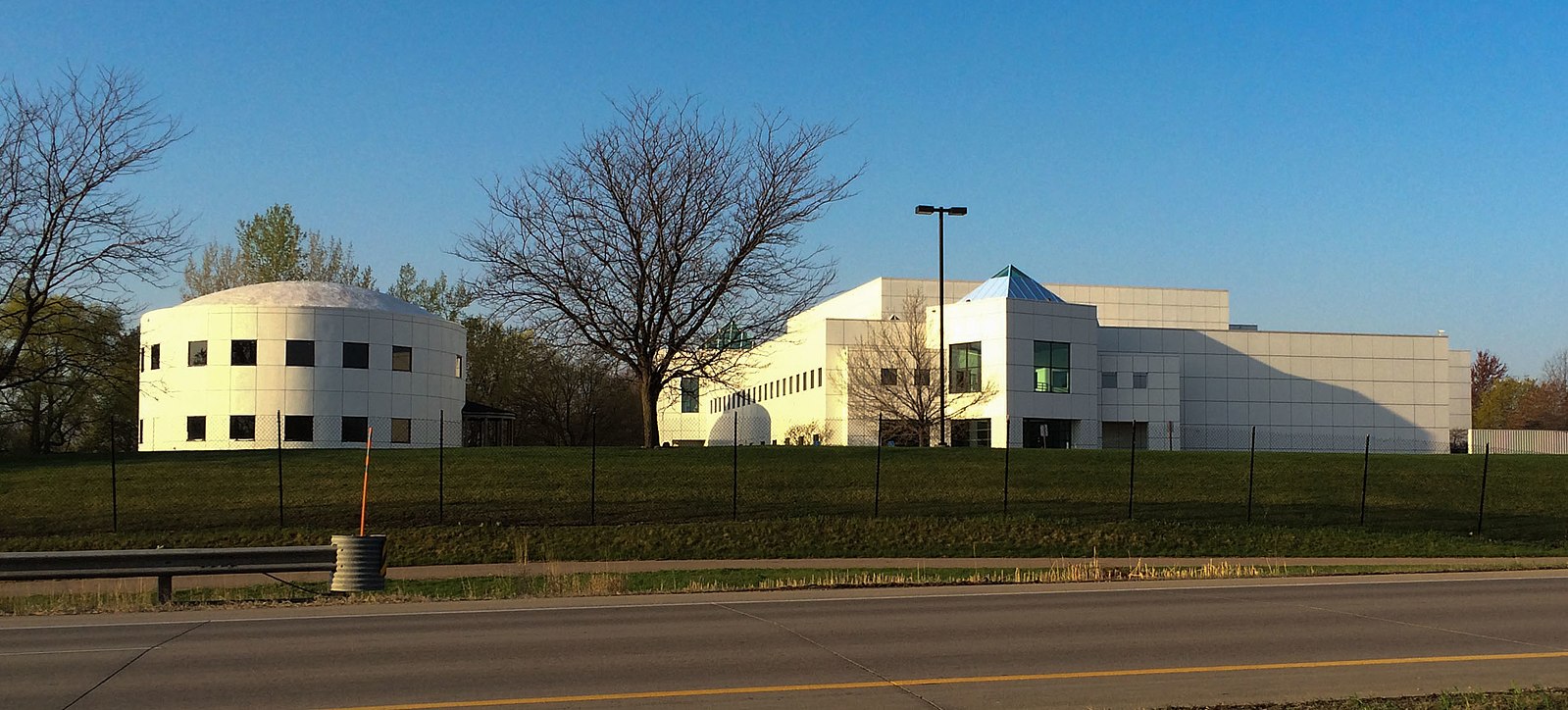
Our last visit to Paisley Park was a month after Prince died. Fans had been gathering to show their love and share their grief. A makeshift memorial of handmade art and purple balloons decorated hundreds of feet of chainlink fencing around the property. Traffic and parking were becoming a challenge for neighbors.
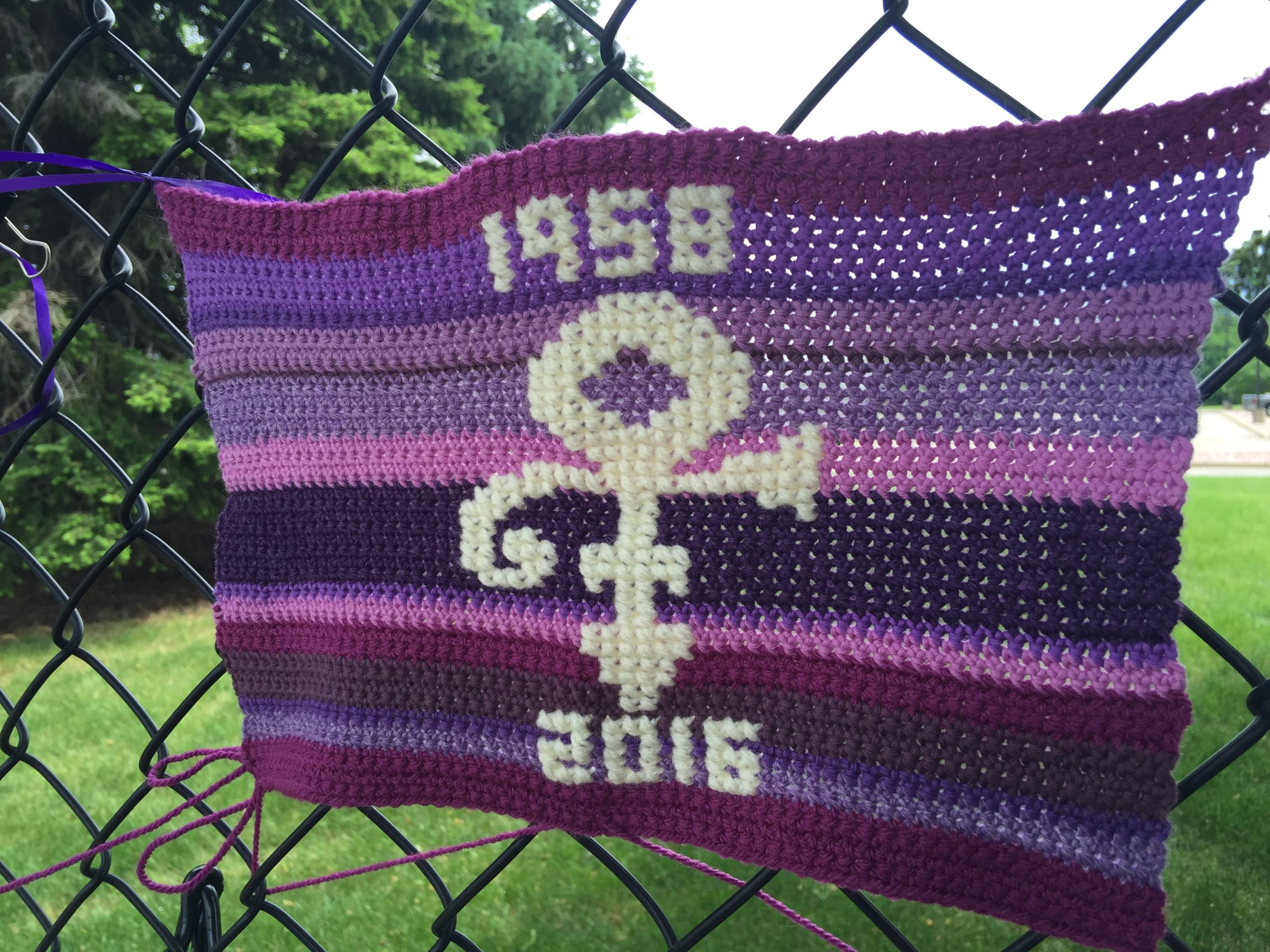
A lifelong Prince fan, Dawn has been trying to get into Paisley Park since it was built in 1987. Her best effort came two years later when she and a girlfriend pretended to have a flat tire and asked if they could come in to use the phone. Their act did not fool the security guard but did catch the attention of a member of the Kool & the Gang entourage — the band was there rehearsing for an upcoming tour. He invited the young women onto the tour bus, which did not have a phone but did have both Kool and the Gang. Dawn and her friend politely declined and drove off on their non-flat tires.*
As impenetrable as the walls of Paisley Park were in its early years, Prince’s home grew surprisingly accessible. After our tour, we’ll stop four miles up the road at the birthplace of the Honeycrisp, the University of Minnesota’s Apple House. If you’re there in season, buy a bag of whatever they recommend, a tub of Abdallah Caramel Dip, and thank me later. Checking out, Dawn was making conversation with the lovely sexagenarian at the till who casually mentioned she never attended any of the parties Prince invited neighbors to. “They always started so late,” she says matter-of-factly.
We’re one of only a few cars in the small parking lot as we pull in 15 minutes early for our 6:30 pm tour. An emotional cocktail of fanboy anticipation and mournful reverence swirls in my gut. A few other folks start to mingle outside, then the door swings open. “Welcome to Paisley Park,” a warm and official-looking man declares. At the check-in desk, we’re each handed a pleather pouch. Prince didn’t allow phones or cameras in his home, and those wishes are still being honored. We place our phones and licenses in the pouch and meet our guide for the next 70 minutes.
At $45 for the general ticket, tour groups are small and intimate. We’re joined by ten other people from around the county — all first-timers. Until five months ago, visitors could see a custom-made porcelain Paisley Park topped with the unpronounceable O(+> symbol, bejeweled with seven precious stones and containing the ashes of Prince.
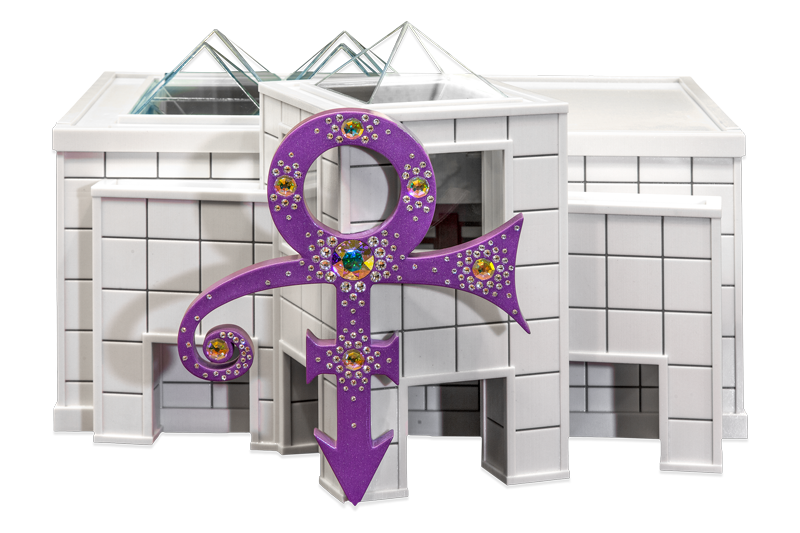
The urn remains on the property but not on public display. Our guide explains how the tone of the tour is shifting toward joy, away from mourning. Then he points to a cage on the second-floor balcony with Prince’s two pet doves.** This is the closest we’ll get to the residential portion of Paisley Park. We’re one minute in, and Dawn and I are doing a terrible job of not feeling sad.
As we move to the main entrance hall of the mostly windowless complex, four pyramidic skylights illuminate the 16-foot Prince logo set in the tile floor. Out of superstitious respect, I avoid stepping on the logo as we filter in. Our sadness is quickly cut by the sheer weirdness of the place. On two sides of the hall are small offices, each has been decorated to commemorate one of his albums. On the third side is a modest kitchenette where Prince would watch Timberwolves games and make microwave popcorn. On the fourth side are stairs to the residence and a new wall covering the entrance to the elevator.
The tour continues through Prince’s personal office, recording studios and dance studio, now home to Purple Rain’s purple motorcycle. Pasley Park feels oddly small and intimate until we enter the 12,400-square-foot sound stage. Some of his cars have been put on display, surrounded by Prince-size mannequins sporting his most memorable outfits. Otherwise, the massive room is just as it was when it hosted Prince’s Pajama Jammy Jams. In Paisley Park’s early days as a commercial enterprise, this room served as a film studio for everything from Grumpy Old Men to Volkswagon commercials. Bands from the Beastie Boys to the Bee Gees to, yes, Kool & the Gang rehearsed stadium tours in this very space.
The last exhibit before the gift shop is the most personal: a collection of the fan-made chainlink fence memorial. The entire display was painstakingly disassembled and cataloged. The museum regularly rotates portions of the memorial.
A stern but warm-looking security guard mans the exit, eying us as we shop. We pick out some tee shirts for family, a tour book and a O(+> keychain. Having had time to match our faces to our licenses, the guard hands us back the content of our pleather pouches, and we leave Paisley Park.
Just like that, we’re back into the light of day, back into the real world, back into a world without Prince and a world where Prince will never die. We’ve had our share of death and memorializing and bronze and purple and caged doves for one day. Time to hop in our rental car, buy a bag of apples, and a tub of caramel, drive to Litchfield, and live while we’re alive.
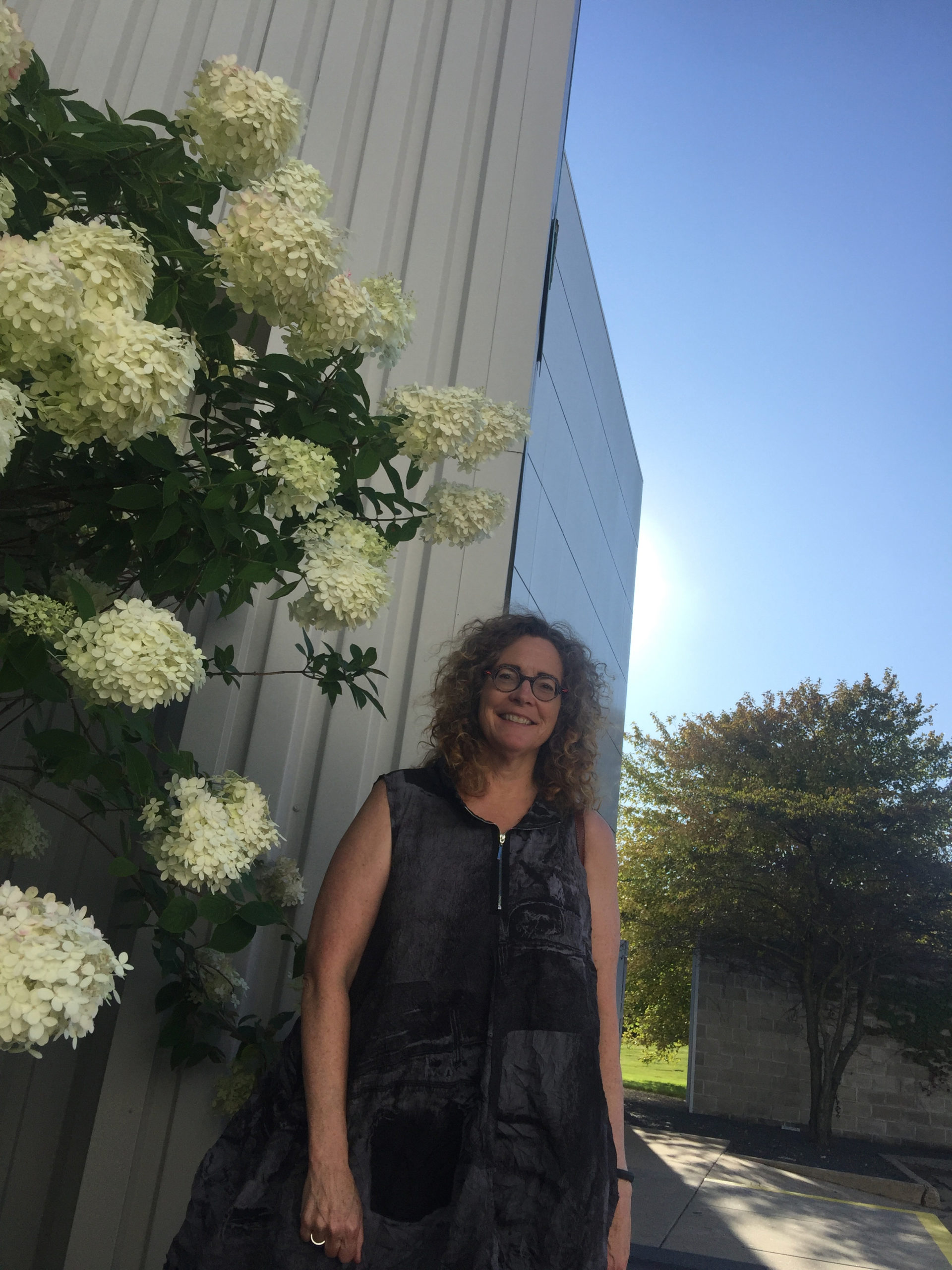
*In our family, we call this the Kool and the Gang Bang story.
**In researching this story, I learned Majesty, the male, died in 2007. Divinity presumably lives on. Update: On February 2, 2021, after 28 years Divinity died.

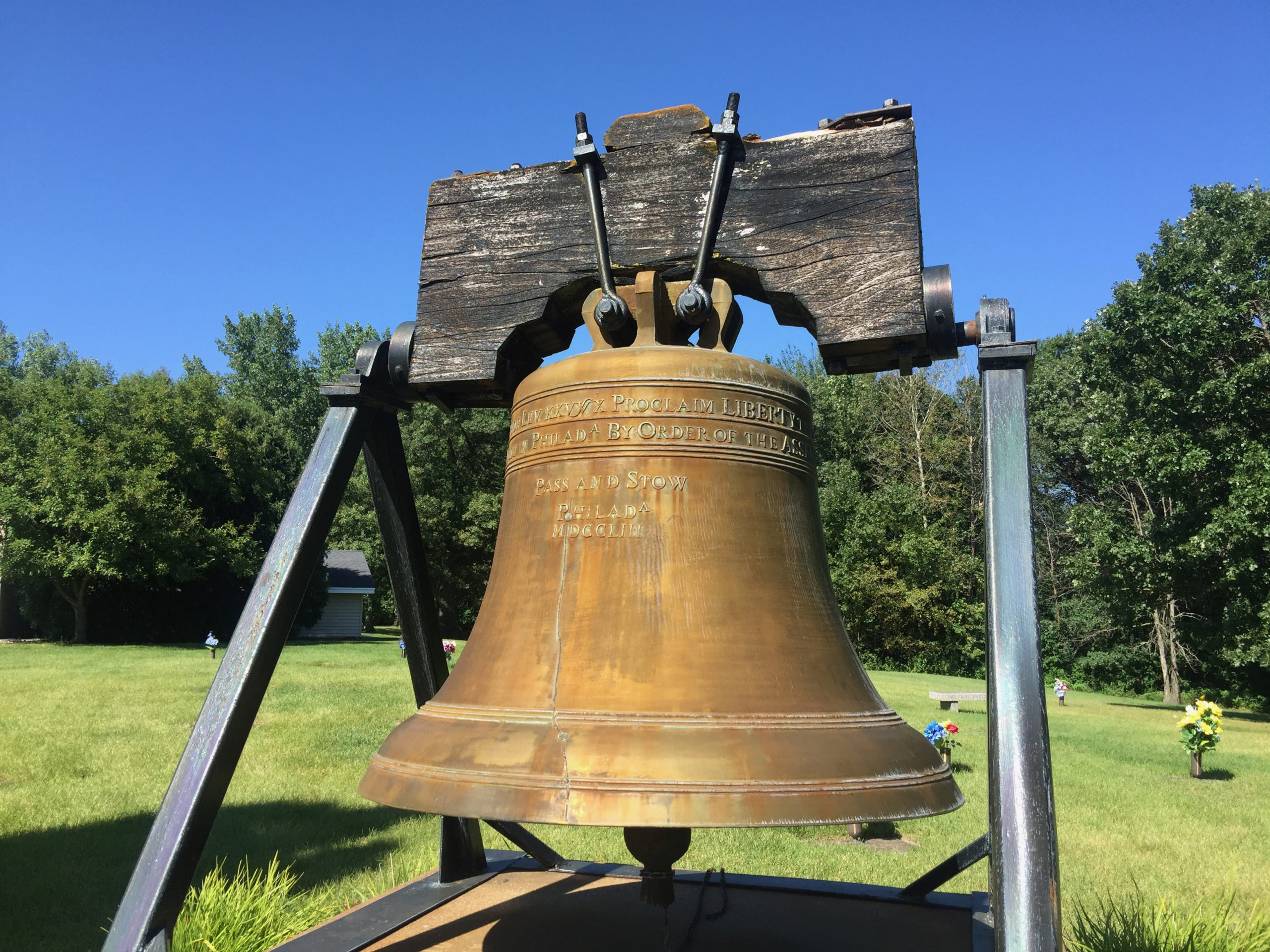
When it comes to the Morningside portion of your article, may I suggest you try some actual investigative research next time and use facts in your articles!
Mr. Beckman,
Thanks for your comment. Am I correct to assume you’re related to the Beckmans mentioned in the article? If so, I’d love to hear any firsthand accounts or memories you have of the Morningside Liberty Bell.
And by all means, if you can point to anything factually inaccurate in the article and/or provide any info that would more accurately tell the story, I’m all ears.
I should note, the specific quotes from Mr. and Mrs. Beckman are as relayed by Rev. Joseph Head to Star Tribune reporter Dave Wood in 1982 (I can send you clippings of my research if you’d like). Now, if you told me you think Rev. Head was spinning yarns and embellishing the story, I’d absolutely believe your opinion. Seems like he was quite the character.
As for Morningside’s customer grievances, the subsequent investigations by Anoka County and the January 1979 Coon Rapids City Council meeting, I’ve relayed information as reported in several local press outlets at the time and available in the public record. If you have facts to refute the public record, I’d love to see them.
To shift from facts to opinions for a moment, It’s my personal opinion that the Beckmans had good, honest intentions with Morningside. I’ve written a half dozen pieces on cemetery owners, and I can’t say the same for all of them. Pre-need plot sales were a new concept at the time, and regulations seemed to change often and vary from state to state. It was a bit like the Wild West and not uncommon for such cemeteries to run afoul of state regulators. I think Mr. Beckman’s illness and (perhaps) some less than scrupulous business associates exacerbated their customer service challenges.
But that’s just my opinion.
Please share both your facts and opinions with me, and I’ll revise the piece as needed. I’ve heard from a few family members of folks I’ve written about in other articles and love hearing their firsthand accounts.
I look forward to hearing back from you.
All the best,
—Tom